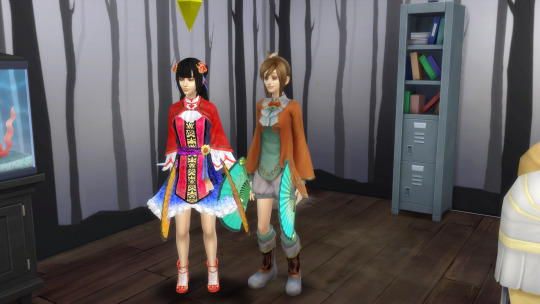#daqiao
Explore tagged Tumblr posts
Text

Dynasty Warriors and Three Kingdoms fans, let's enjoy the another Three Kingdoms-themed game, Age of Empires II: Definitive Edition: The Three Kingdoms!!
I'm sure if the Dynasty Warriors aka Shin Sangokumusou players can enjoy the game which has same stories based on Three Kingdoms of China (Shu, Wei, Wu)
And maybe Daqiao, Guan Yinping, Xin Xianying, Cai Wenji, Diaochan, Lu Lingqi and Wang Yi can play that game based on Romance of the Three Kingdoms~
#Dynasty Warriors#Daqiao#Da Qiao#Guan Yinping#Xin Xianying#Cai Wenji#Diaochan#Diao Chan#Lu Lingqi#Wang Yi#Koei Tecmo#Shin Sangokumusou#Age of Empires#Age of Empires 2#Age of Empires II#Age of Empires II: Definitive Edition#Age of Empires 2: Definitive Edition#Age of Empires II: Definitive Edition - The Three Kingdoms#The Three Kingdoms
0 notes
Text
I ended up playing Dynasty Warriors btw--
God the desire to create VS I am just a sleepy little lad--
#I will forever miss my file on my xbox 360 but it does feel nice to start fresh again on pc#I will make daqiao the most terrifying thing ever and optimize her weapon to perfection again this is a threat <3#also need to do my sick as hell throwing knives build it makes you untouchable on chaos mode and up it's great#but!!! anyway since i have xl complete edition on pc I can FINALLY live my dreams of an official lu bu story mode that isn't dw6 /lh#and I think I'm??? almost to the historical/hypothetical route split now?#I'm being spoiled AS FUCK and I have legit only been playing zhang liao at any given opprotunity#legit he is so much fun twin axes kill and go brr--#data log: personal
5 notes
·
View notes
Text
Warriors Orochi Substitute Officers
When playing a battle as a character that is an ally in the battle, a generic officer will take their place. Substitute officer allocations were all over the place in Warriors Orochi Z, but in Warriors Orochi 3, efforts were made to standardise them. Such a shame Koei Tecmo got lazy and scrapped that system in Warriors Orochi 4.
Anyway, here is a list of substitute officers in Warriors Orochi 3, combined with my substitute officer picks for the hypothetical Warriors Orochi: The Recollective (hereafter shortened to WOX) and a hypothetical Warriors Orochi 4 that I will cover in its retrospective.
DW-Wei 三國-魏 (20)
Xiahou Dun 夏侯惇 → Xiahou Mao 夏侯楙 Dian Wei 典韋 → Cao Anmin 曹安民 Zhang Liao 張遼 → Zhang Hu 張虎 Cao Cao 曹操 → Cao Ang 曹昂 Xu Zhu 許褚 → Cao Hong 曹洪 (WO3) → Xu Yi 許儀 (WOX/WO4) Xiahou Yuan 夏侯淵 → Xiahou Wei 夏侯威 Xu Huang 徐晃 → Man Chong 満寵 (WO3) → Xu Shang 徐商 (WOX/WO4) Zhang He 張郃 → Xin Pi 辛毗 (WO3) → Gao Lan 高覧 (WOX/WO4) Cao Ren 曹仁 → Cao Hong 曹洪 Cao Pi 曹丕 → Cao Zhi 曹植 Zhenji 甄姫 → Yuan Xi 袁煕 Cai Wenji 蔡文姫 → Cai Yong 蔡邕 Jia Xu 賈詡 → Cheng Yu 程昱 (WO3) → Hu Che’er 胡車児 (WOX/WO4)* Pang De 龐徳 → Pang Hui 龐会 Wang Yi 王異 → Yang Fu 楊阜 Guo Jia 郭嘉 → Xun Yu 荀彧 (WO3) → Xin Pi 辛毗 (WOX/WO4) Yue Jin 楽進 → Yue Chen 楽綝 Li Dian 李典 → Jia Kui 賈逵 Yu Jin 于禁 → Man Chong 満寵 Xun Yu 荀彧 → Cheng Yu 程昱
*Xun You replaces Jia Xu in WOX Wei Chapter 11: Battle of Shizugatake
DW-Wu 三國-呉 (19)
Zhou Yu 周瑜 → Lu Su 魯粛 (WO3) → Zhuge Jin 諸葛瑾 (WOX/WO4) Lu Xun 陸遜 → Zhu Ran 朱然 (WO3) → Lu Kang 陸抗 (WOX/WO4) Sun Shangxiang 孫尚香 → Sun Jing 孫静 (WO3) → Sun Ben 孫賁 (WOX/WO4) Gan Ning 甘寧 → Su Fei 蘇飛 Sun Jian 孫堅 → Sun Jing 孫静 Taishi Ci 太史慈 → Taishi Xiang 太史享 Lu Meng 呂蒙 → Pan Zhang 潘璋 Huang Gai 黄蓋 → Cheng Pu 程普 Zhou Tai 周泰 → Han Dang 韓当 (WO3) → Jiang Qin 蒋欽 (WOX/WO4) Ling Tong 凌統 → Ling Cao 凌操 Sun Ce 孫策 → Sun Shao 孫韶 Sun Quan 孫権 → Zhuge Jin 諸葛瑾 (WO3) → Sun Deng 孫登 (WOX/WO4) Xiaoqiao 小喬 → Zhang Zhao 張昭 Daqiao 大喬 → Sun Kuang 孫匡 Ding Feng 丁奉 → Zhu Huan 朱桓 Lianshi 練師 → Sun Lang 孫朗 Lu Su 魯粛 → Quan Zong 全琮 Han Dang 韓当 → Xu Sheng 徐盛 Zhu Ran 朱然 → Zhu Zhi 朱治
DW-Shu 三國-蜀 (22 + 1) Includes Zhou Cang from DW9 for WO4 (carryover from Warriors All-Stars)
Zhao Yun 趙雲 → Chen Dao 陳到 (WO3) → Zhao Tong 趙統 (WOX/WO4) Guan Yu 関羽 → Guan Xing 関興 (WO3) → Zhou Cang 周倉 (WOX) → Wang Fu 王甫 (WO4) Zhang Fei 張飛 → Zhang Bao 張苞 (WO3) → Sun Qian 孫乾 (WOX/WO4) Zhuge Liang 諸葛亮 → Jiang Wan 蒋琬 Liu Bei 劉備 → Jian Yong 簡雍 Ma Chao 馬超 → Ma Teng 馬騰 Huang Zhong 黄忠 → Yan Yan 厳顔 Wei Yan 魏延 → Yi Ji 伊籍 Guan Ping 関平 → Zhou Cang 周倉 (WO3) → Liao Hua 廖化 (WOX/WO4) Pang Tong 龐統 → Fa Zheng 法正 (WO3) → Chen Dao 陳到 (WOX/WO4) Yueying 月英 → Ma Liang 馬良 (WO3) → Ma Su 馬謖 (WOX/WO4) Jiang Wei 姜維 → Fei Yi 費禕 Liu Shan 劉禅 → Liu Feng 劉封 Xingcai 星彩 → Zhang Bao 張苞 (WO3) → Zhang Shao 張紹 (WO4) Ma Dai 馬岱 → Han Sui 韓遂 Guan Suo 関索 → Guan Xing 関興 (WO3) → Guan Yi 関彝 (WOX/WO4) Bao Sanniang 鮑三娘 → Guan Yi 関彝 (WO3) → Bao Su 鮑素 (WOX/WO4) Xu Shu 徐庶 → Ma Liang 馬良 Guan Xing 関興 → Wang Fu 王甫 (WOX) → Guan Tong 関統 (WO4) Zhang Bao 張苞 → Zhang Yi 張翼 Guan Yinping 関銀屏 → Xiang Lang 向朗 Fa Zheng 法正 → Zhang Song 張松 Zhou Cang 周倉 → Pei Yuanshao 裴元紹 (Replaces Sophitia ソフィーティア → N/A なし)
DW-Jin 三國-晋 (12)
Sima Yi 司馬懿 → Sima Lang 司馬朗 Sima Shi 司馬師 → Sima Fu 司馬孚 Sima Zhao 司馬昭 → Sima Yan 司馬炎 Deng Ai 鄧艾 → Deng Zhong 鄧忠 Wang Yuanji 王元姫 → Sima You 司馬攸 Zhong Hui 鍾会 → Chen Tai 陳泰 Zhuge Dan 諸葛誕 → Wen Qin 文欽 Xiahou Ba 夏侯覇 → Xiahou Hui 夏侯恵 Guo Huai 郭淮 → Cao Zhen 曹真 Jia Chong 賈充 → Hu Lie 胡烈 Wen Yang 文鴦 → Wen Hu 文虎 Zhang Chunhua 張春華 → Sima Wang 司馬望
DW-Other 三國-他 (10)
Diaochan 貂蝉 → Wang Yun 王允 Lu Bu 呂布 → Chen Gong 陳宮 (WO3) → Gao Shun 高順 (WOX/WO4) Dong Zhuo ��卓 → Dong Min 董旻 Yuan Shao 袁紹 → Yuan Tan 袁譚 Zhang Jiao 張角 → Zhang Bao 張宝 Meng Huo 孟獲 → King Wutugu 兀突骨 Zhurong 祝融 → King Mulu 木鹿大王 Zuo Ci 左慈 → Yu Ji 于吉 Chen Gong 陳宮 → Xu Si 許汜 Lu Lingqi 呂玲綺 → Cheng Lian 成廉
SW-SW1 戦国-戦国1 (16)
Yukimura Sanada 真田幸村 → Masayuki Sanada 真田昌幸 (WO3/WOX) → Nobutsuna Sanada 真田信綱 (WO4) Keiji Maeda 前田慶次 → Kazumasu Takigawa 滝川一益 Nobunaga Oda 織田信長 → Nobutada Oda 織田信忠 Mitsuhide Akechi 明智光秀 → Hidemitsu Akechi 明智秀満 Goemon Ishikawa 石川五右衛門 → Shirōjirō Chaya 茶屋四郎次郎 Kenshin Uesugi 上杉謙信 → Kagekatsu Uesugi 上杉景勝 (WO3) → Norimasa Uesugi 上杉憲政 (WOX/WO4) Oichi お市 → Kazumasa Isono 磯野員昌 Okuni 阿国 → Yukinaga Asano 浅野幸長 Kunoichi くのいち → Kansuke Yamamoto 山本勘助 Magoichi Saika 雑賀孫市 → Rairen Shimozuma 下間頼廉 (WO3) → Morishige Tsuchihashi 土橋守重 (WOX/WO4) Shingen Takeda 武田信玄 → Nobukado Takeda 武田信廉 Masamune Date 伊達政宗 → Hidemune Date 伊達秀宗 Nō 濃姫 → Mitsuharu Fuwa 不破光治 Hanzō Hattori 服部半蔵 → Mototada Torii 鳥居元忠 Ranmaru Mori 森蘭丸 → Yoshinari Mori 森可成 Hideyoshi Toyotomi 豊臣秀吉 → Hideyori Toyotomi 豊臣秀頼
SW-SW2 戦国-戦国2 (18)
Yoshimoto Imagawa 今川義元 → Sessai Taigen 太原雪斎 Tadakatsu Honda 本多忠勝 → Tadamasa Honda 本多忠政 Ina 稲姫 → Nobuyuki Sanada 真田信之 (WO3) → Tadatomo Honda 本多忠朝 (WOX/WO4) Ieyasu Tokugawa 徳川家康 → Hidetada Tokugawa 徳川秀忠 (WO3/WOX) → Nobuyasu Matsudaira 松平信康 (WO4) Mitsunari Ishida 石田三成 → Yoshitsugu Ōtani 大谷吉継 (WO3) → Yukinaga Konishi 小西行長 (WOX/WO4) Nagamasa Azai 浅井長政 → Hisamasa Azai 浅井久政 Sakon Shima 島左近 → Teruzumi Akashi 明石全登 Yoshihiro Shimazu 島津義弘 → Toyohisa Shimazu 島津豊久 (WO3) → Yoshihisa Shimazu 島津義久 (WOX/WO4) Ginchiyo Tachibana 立花誾千代 → Yoshinori Ōtomo 大友義乗 Kanetsugu Naoe 直江兼続 → Kagetsuna Naoe 直江景綱 Nene ねね → Hidenaga Toyotomi 豊臣秀長 Kotarō Fuma 風魔小太郎 → Tsunashige Hōjō 北条綱成 Musashi Miyamoto 宮本武蔵 → Nobutsuna Kamiizumi 上泉信綱 Toshiie Maeda 前田利家 → Toshinaga Maeda 前田利長 Motochika Chōsokabe 長宗我部元親 → Chikayasu Kōsokabe 香宗我部親泰 (WO3) → Nobuchika Chōsokabe 長宗我部信親 (WOX/WO4) Gracia ガラシャ → Tadaoki Hosokawa 細川忠興 Kojirō Sasaki 佐々木小次郎 → Kanesuke Susukida 薄田兼相 Katsuie Shibata 柴田勝家 → Katsumasa Shibata 柴田勝政
SW-SW3 戦国-戦国3 (12)
Kiyomasa Katō 加藤清正 → Yasuharu Wakisaka 脇坂安治 Kanbei Kuroda 黒田官兵衛 → Nagamasa Kuroda 黒田長政 Muneshige Tachibana 立花宗茂 → Korenobu Yufu 由布惟信 Kai 甲斐姫 → Ujinaga Narita 成田氏長 Ujiyasu Hōjō 北条氏康 → Ujimasa Hōjō 北条氏政 (WO3) → Ujitsuna Hōjō 北条氏綱 (WOX/WO4) Hanbei Takenaka 竹中半兵衛 → Shigetoshi Takenaka 竹中重利 Motonari Mōri 毛利元就 → Terumoto Mōri 毛利輝元 Aya 綾御前 → Kagetora Uesugi 上杉景虎 Masanori Fukushima 福島正則 → Yoshiaki Katō 加藤嘉明 Takatora Tōdō 藤堂高虎 → Takayoshi Tōdō 藤堂高吉 Naotora Ii 井伊直虎 → Naomori Ii 井伊直盛 Munenori Yagyū 柳生宗矩 → Munetoshi Yagyū 柳生宗厳
SW4 戦国-戦国4 (10 + 8) Includes characters from Spirit of Sanada for WO4
Nobuyuki Sanada 真田信之 → Nobumasa Sanada 真田信政 Yoshitsugu Ōtani 大谷吉継 → Yoshiharu Ōtani 大谷吉治 Hisahide Matsunaga 松永久秀 → Hisamichi Matsunaga 松永久通 Kojūrō Katakura 片倉小十郎 → Shigenaga Katakura 片倉重長 Kagekatsu Uesugi 上杉景勝 → Chikanori Suibara 水原親憲 Takakage Kobayakawa 小早川隆景 → Motoharu Kikkawa 吉川元春 Koshōshō小少将 → Chikayasu Kōsokabe 香宗我部親泰 Toyohisa Shimazu 島津豊久 → Iehisa Shimazu 島津家久 Lady Hayakawa 早川殿 → Ujimasa Hōjō 北条氏政 Naomasa Ii 井伊直政 → Naotaka Ii 井伊直孝
Masayuki Sanada 真田昌幸 → Yukitaka Sanada 真田幸隆 Chacha 茶々 → Harunaga Ōno 大野治長 Sasuke 佐助 → Masasuke Ideura 出浦昌相 Katsuyori Takeda 武田勝頼 → Nobushige Takeda 武田信繁 Hidetada Tokugawa 徳川秀忠 → Hideyasu Yūki 結城秀康 Lady Muramatsu 村松殿 → Shigemasa Oyamada 小山田茂誠 Naiki Takanashi 高梨内記 → Sakyō Raifukuji 来福寺左京 Lady Yamanote 山手殿 → Masateru Sanada 真田昌輝
Orochi-Orochi1 遠呂智-遠1 (14)
Orochi 遠呂智 → Diamondback 蛟 (WO3) → Lancehead 以津真天 (WOX/WO4) Da Ji 妲己 → Bushmaster 猪豚蛇 (WOX) → Fornax 紂王 (WO3/WO4) Taigong Wang 太公望 → Vela 楊戩 (WO3) → Aquila 南華仙人 (WOX/WO4) Fu Xi 伏犠 → Aquila 南華仙人 (WO3) → Zhang Liang 張梁 (WOX/WO4) Nuwa 女媧 → Pyxis 神農 (WO3) → Ophiuchus 李鉄拐 (WO3U) → Cygnus 武吉 (WOX/WO4) Sun Wukong 孫悟空 → Coachwhip 野槌 Yoshitsune Minamoto 源義経 → Shigenari Kimura 木村重成 Kiyomori Taira 平清盛 → Boomslang 隠形鬼 Himiko 卑弥呼 → Goldenrod 悪樓 (WOX) → Musca 難升米 (WO3/WO4) Orochi X 真・遠呂智 → Coltan 魔計奴鬼 (WOX) → Ijū 異獣 (WO3/WO4) Dodomeki 百々目鬼 → Leaflitter 瘧鬼 Gyūki 牛鬼 → Nosean 夜刀神 Sanzang 三蔵法師 → Sha Wujing 沙悟浄 Benkei 弁慶 → Rairen Shimozuma 下間頼廉
Orochi-Orochi2 遠呂智-遠2 (12)
Kaguya かぐや → Lepus 月夜見 Susano’o 素戔嗚 → Lacerta 五十猛 Nezha 哪吒 → Grus 金吒 Shūten Dōji 酒呑童子 → Centaurus 茨木童子 Seimei Abe 安倍晴明 → Vela 楊戩 (WO3) → Crux 天火明 (WO4) Shennong 神農 → Lacerta 五十猛 (WO3) → Ophiuchus 李鉄拐 (WOX/WO4) Tamamo 玉藻前 → Cottonmouth 黄泉軍 Yinglong 応龍 → Vela 楊戩 (WO3) → Wei Hu 韋護 (WO4) Nezha (human) 哪吒(人型) → Vulpecula 木吒 Kyūbi 九尾の狐 → Itaoni 板鬼 Hundun 渾沌 → Hammerjaw 魍魎 Diamondback 蛟 → Mamushi 飛頭蛮
Orochi-Orochi3 遠呂智-遠3 (10 + 10) Includes characters from DW Multi Raid 2, DW Godseekers and Warriors All-Stars
Lei Bin 雷斌 → Zhao Guang 趙広 Lixia 黎霞 → Thunder 経津主 Chiyou 蚩尤 → Feldspar 狻 Qin Shihuang 始皇帝 → Wang Wan 王綰 Qin Shihuang (Young) 始皇帝 → She Jian 涉間 Xiang Yu 項羽 → Xiang Bo 項伯 Lady Yu 虞美人 → Xiang Zhuang 項莊 Xi Wangmu 西王母 → Ursa 北斗 Huang Quan 黄泉 → Periclase 螭首 Muwang 穆王 → Centaurus 南斗
Tamaki 環 → Nursery 天児屋 Shiki 志貴 → Forest 山幸彦 Setsuna 刹那 → Mountain 海幸彦 Sayo 小夜 → Destiny 玉櫛姫 Yomi (Demon) 夜見 → Yosuzume 夜雀 Yomi (True) 夜見 (真) → Fate 菊理姫 Yang Jian 楊戩 → Zhu Bajie 猪八戒 Yoshitsune Minamoto (Young) 源義経 → Yoritomo Minamoto 源頼朝 Kiyomori Taira (Young) 平清盛 → Shigemori Taira 平重盛 Benkei (Young) 弁慶 → Yoshinari Ichijō 一条能成
Orochi-Minamoto 遠呂智-源 (13) Includes collaboration characters from WO3 and Warriors All-Stars
Ryu Hayabusa リュウ・ハヤブサ → Sasuke サスケ Rachel レイチェル → Saizō サイゾウ Momiji 紅葉 → Seikai セイカイ Joan of Arc ジャンヌ・ダルク → Auriga 白鶴童子 Nemea ネメア → Camelopardalis 黄飛虎 Achilles アキレウス → Sagitta 聞仲 Sterkenberg ステルケンブルク → Draco 竜鬚虎 Ōka 桜花 → Yoshisada Yasuda 安田義定 Horō ホロウ → Yoshinori Yamana 山名義範 Tokitsugu 時継 → Hiromoto Ōe 大江広元 Opoona オプーナ → Yoshihisa Washio 鷲尾義久 Sophie ソフィー → Zou Yao 騶揺 Plachta プラフタ → Shu Pan 蜀泮
Orochi-Taira 遠呂智-平 (13) Includes collaboration characters from WO3 and Warriors All-Stars
Ayane あやね → Danzō ダンゾウ Kasumi かすみ → Jiraiya ジライヤ Hajime Arima 有馬一 → Kanetaka Yamaki 山木兼隆 Darius ダリウス → Ietsuna Hasuike 蓮池家綱 William Adams ウィリアム・アダムス → Kaneyasu Senō 妹尾兼康 Marie Rose マリー・ローズ → Tadakiyo Fujiwara 藤原忠清 Honoka ほのか → Toshitō Hirata 平田俊遠 Millennia ミレニア → Mu Zhu 無諸 Laegrinna レグリナ → Zhao Tuo 趙佗 Rio リオ → Lu Wan 盧綰 Nobunyaga Oda 織田のぶニャが → Katsunaga Oda 織田勝長 Arnice アーナス → Ji Zhun 箕準 Christophorus クリストフォラス → Wei Man 衛滿
Total: 220 characters
#dynasty warriors#samurai warriors#warriors orochi#koei tecmo#koei warriors#koei warriors retrospective extras
2 notes
·
View notes
Text
Zhou Yu will NOT give up, oh my goodness. 🤣😭 He’s been trying to recruit my girl into Xiahou Dun’s army since I first started this playthrough. This is like the fifth time he’s tried. Like. My good sir, I adore you, but no. Zhu Ran is my emperor- and sworn sibling. Leaving would mean he’d have to abdicate the throne. NOOOO. He still hasn’t had the rivalry battle with Lu Xun’s kingdom!!!
I’m just gonna headcanon he’s pining super hard because they had an A relationship rank before I had my character recruit (and marry) Li Dian and move to Zhu Ran’s kingdom to serve him because the game is mean and won’t let you recruit another person if they’re already serving a ruler unless you have a certain passive action unlocked via your rank. Sigh.
I should have married Li Dian and gotten Zhou Yu up to sworn sibling first before moving kingdoms. Ah, well. Makes for some good headcanon drama, at least.
Freaking hilarious though that Zhu Ran decided to make him and my girl sworn siblings first instead of promoting her to Marshall or Strategist even though I DID THE ESCORT THE RULER QUEST THREE HECKING TIMES. As soon as I decided to serve his kingdom??? Bam, sworn sibling. Where’s my promotion, bro?
Also.
Yue Jin and Li Dian being besties, but Yue Jin is serving Daqiao and Li Dian is married to my character, who is serving Zhu Ran??? More drama!!! Because WOW I have fought this dude in almost every single “quest” I’ve taken so far.
4 notes
·
View notes
Video
youtube
Wuxi Daqiao Ring Rolling Machine Characteristic #ringrollingmachine #rol...
0 notes
Link
Daqiao for G8F RebuildGame asset credit dynasty warriors 9 DAZ Content Package includes data\DAZ 3D\Genesis 8\Female\Morphs\DAZ 3D\Base\PBMNipples.dsf\Body\PBMBreastsShape08.dsf\Body\PBMNipplesDepth.dsf\Head\CTRLEyesIrisSize.dsfdata\DAZ 3D\Genesis 8\Female\Morphs\Malimali\Daqiao\XBMDaqiao BODY.dsfdata\DAZ 3D\Genesis 8\Female\Morphs\Malimali\Daqiao\XBMDaqiao HEAD.dsf People\Genesis 8 Female\Characters\Malimali\Daqiao\Daqiao G8F.duf\Daqiao G8F.duf.png\Materials\Daqiao SKIN 1.duf\Materials\Daqiao SKIN 1.duf.png\Materials\Daqiao SKIN 2.duf\Materials\Daqiao SKIN 2.duf.png\Materials\Daqiao SKIN 3.duf\Materials\Daqiao SKIN 3.duf.png\Materials\Daqiao SKIN 3.tip.png\Materials\Daqiao SKIN 4.duf\Materials\Daqiao SKIN 4.duf.png\Materials\Daqiao SKIN 4.tip.png\Outfit\Daqiao Fan.duf\Outfit\Daqiao Fan.duf.png\Outfit\Daqiao flower 2-2.duf\Outfit\Daqiao flower 2-2.duf.png\Outfit\Daqiao haircap.duf\Outfit\Daqiao haircap.duf.png\Outfit\Daqiao headacc.duf\Outfit\Daqiao headacc.duf.png\Outfit\Daqiao Rigged hair back.duf\Outfit\Daqiao Rigged hair back.duf.png\Outfit\Daqiao Rigged hair Front.duf\Outfit\Daqiao Rigged hair Front.duf.png\Outfit\Daqiao Rigged hairwear.duf\Outfit\Daqiao Rigged hairwear.duf.png\Outfit\Daqiao_Outfit.duf\Outfit\Daqiao_Outfit.duf.png\Outfit\Materials\Hair color 1.duf\Outfit\Materials\Hair color 1.duf.png\Outfit\Materials\Hair color 1.tip.png\Outfit\Materials\Hair color 2.duf\Outfit\Materials\Hair color 2.duf.png\Outfit\Materials\Hair color 3.duf\Outfit\Materials\Hair color 3.duf.png\Outfit\Materials\Hair color 3.tip.png\Outfit\Materials\Hair color 4.duf\Outfit\Materials\Hair color 4.duf.png\Outfit\Materials\Hair color 5.duf\Outfit\Materials\Hair color 5.duf.png\Outfit\Materials\Hair color 6.duf\Outfit\Materials\Hair color 6.duf.png\Shaping Preset\!Reset.duf\Shaping Preset\!Reset.duf.png\Shaping Preset\Daqiao + nipples.duf\Shaping Preset\Daqiao + nipples.duf.png\Shaping Preset\Daqiao big breasts.duf\Shaping Preset\Daqiao big breasts.duf.png\Shaping Preset\Daqiao big Eyes iris.duf\Shaping Preset\Daqiao big Eyes iris.duf.png\Shaping Preset\Daqiao BODY.duf\Shaping Preset\Daqiao BODY.duf.png\Shaping Preset\Daqiao HEAD.duf\Shaping Preset\Daqiao HEAD.duf.png Runtime\Support\DAZ_3D_20240106_Daqiao_for_G8F.dsaRuntime\Support\DAZ_3D_20240106_Daqiao_for_G8F.dsxRuntime\Support\DAZ_3D_20240106_Daqiao_for_G8F.png Runtime\Textures\Malimali\Daqiao\Daqiao G8F_FACE_1.png\Daqiao G8F_FACE_2.png\Daqiao G8F_G8F ARM_1_D01.png\Daqiao G8F_G8F LEG_1_D01.png\Daqiao G8F_G8F TOSOR_1_D01.png\Daqiao headwearMaterialMat.1SimTemplate.png\Daqiao_Acc_D.png\Daqiao_Body_D.png\Daqiao_Body_Dirt.png\Daqiao_Body_e.png\Daqiao_Body_e2.png\Daqiao_Body_L.png\Daqiao_Body_M.png\Daqiao_Body_N.png\Daqiao_Body_S.png\Daqiao_Eye_N.png\Daqiao_Eyeshadow_D.png\daqiao_FACE_1.png\daqiao_FACE_2.png\Daqiao_Hair_a.png\Daqiao_Hair_D.png\Daqiao_Hair_N.png\Daqiao_Head_D.png\Daqiao_Head_Dirt.png\Daqiao_Head_L.png\Daqiao_Head_N.png\Daqiao_Head_S.png\Daqiao_Head_SSS.png\daqiao_TOSOR_2.png\DAQIAOLegs_N.jpg\EYE DAQIAO.png\Gen_Eye_Env.png\Gen_Eye_M.png\Gen_Gold_Env.png\Gen_Hair_Env.png\Gen_Hair_N.png\Gen_L.png\Gen_Red_Env.png\Gen_Silver_Env.png\hair_hairfback uv.png\hair_hairfront sim.png\hair_hairfront uv 2.png\N\Daqiao_G8 ARM_1_normal.jpg\N\Daqiao_G8 FACE_2_normal.png\N\Daqiao_G8 LEG_1_normal.jpg\N\Daqiao_G8 TOSOR_1_normal.jpg\N2\DAQIAO Arms_N.jpg\N2\DAQIAO Face_N.jpg\N2\DAQIAO G8F_TOSOR_1_normal.jpg\N2\DAQIAOLegs_N.jpg\weapon\pfan_a.png\weapon\pfan_d.png\weapon\pfan_l.png\weapon\pfan_n.png\weapon\pfan_s.png Thank you for reading Coming soon: https://3d-stuff.net/ #daz3d #dazstudio #3drender #3dart #daz3dstudio #irayrender #3dartwork #blender #blenderrender #blenderart #noaiart #noaiwriting #noai https://3d-stuff.net/
0 notes
Text
my own personal rankings for dw games ive played (not including any of the empires spinoffs). im sorry i know none of you care but youre gonna hear about it anyways
1: dw6 - literally the best in every way ill die on this hill. only complaint is that its where they took away diaochans maces and gave her a whip and ill never forgive them for that one. they also briefly gave zhenji a whip iirc but they put it back in dw7 and thank god for that
2: dw8: second best writing in the whole series and very enjoyable all around. loved the multiple scenario options you could unlock that were like history changing alterations to route, very tasty, very satisfying. spent Far too much time in the alt gameplay mode.
3: dw5 - a classic, the one i spent the most time playing as a kid. the sound effect that cues a cutscene start is going to be burned into me for life i think. like every single characters designs peaked here
5: orochi warriors 3 - yes it counts yes ive only played the third edition. it slayed tho. fun as hell and fun writing. based around the same era as 8 so its thriving
6: dw9 - has its merits and charm at times but it is not very good objectively. open world was a choice that unfortunately forced a cut of a lot of iconic playable things in older games maps. ive liked a number of things i can do in it but i do not think i would reccomend it to anyone unless they were Very dedicated to seeing a specific scenario of a character. but i DO like being able to fuck around aimlessly in the wilderness when im not in the mood to fight things. photo mode is fun too. :).
7: dw1 - kisses this thing softly. i dont think i remember a single detail about playing it aside from basically only playing as daqiao
1 note
·
View note
Text

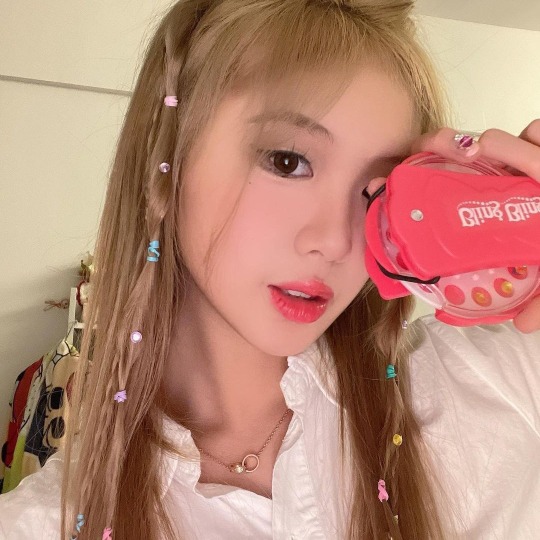

。゚․ 𓋜 ִ ۫ 🔮🌞 𓂋 ◌ ❊ 🎧

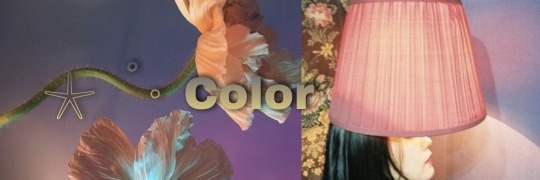

#colorful#edgy#grunge#layouts#packs#alternative#retro#film#header#icons#messy kpop#purple#yellow#locs#haewon nmixx#liang jiao#daqiao#gnz48#miso#jeon jimin#dreamnote#lq#cpop
338 notes
·
View notes
Photo

✧・゚:*Today’s magical girl of the morning is: Daqiao from CrossMagic!✧・゚:*
21 notes
·
View notes
Text

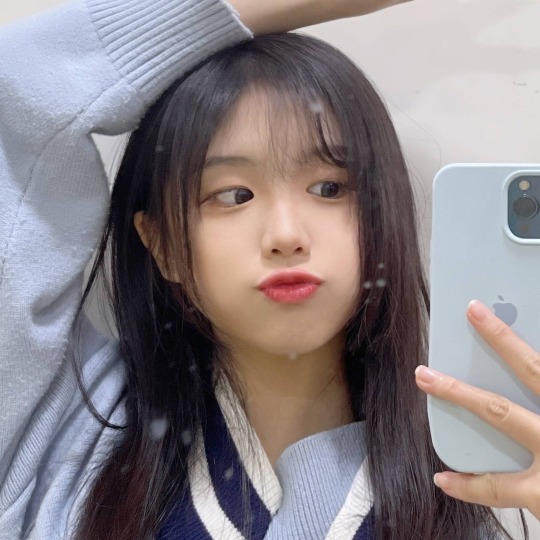
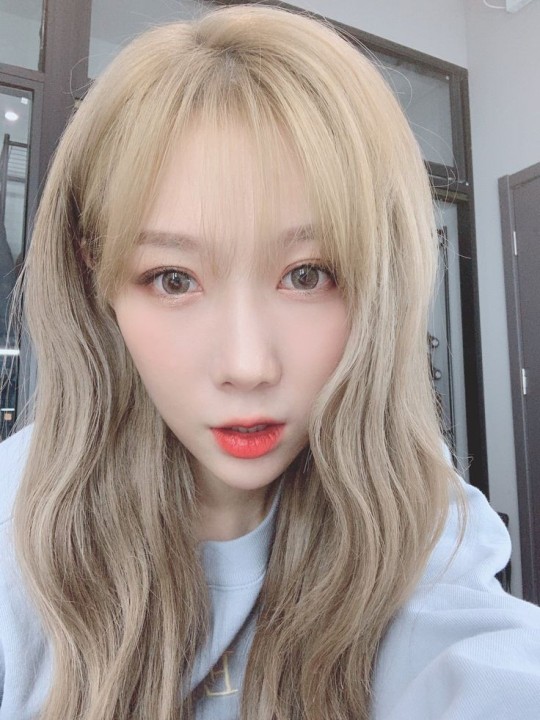
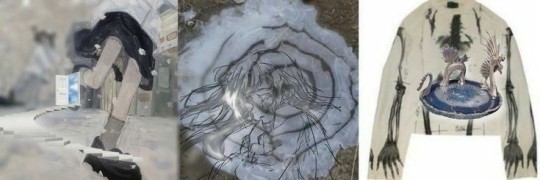
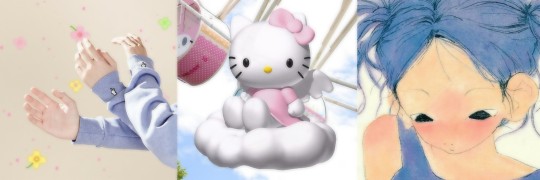

💤💤💤
#skz#stray kids hyunjin#hyunjin layouts#hyunjin icons#messy headers#blue headers#gray headers#gp999 icons#girls planet 999#gnz48 icons#liang jiao#daqiao#messy layouts#moodboard headers#kpop layouts#lq layouts#twitter layouts#gg icons#bg icons#dreamcatcher#handong#fuyusitos blog
168 notes
·
View notes
Text
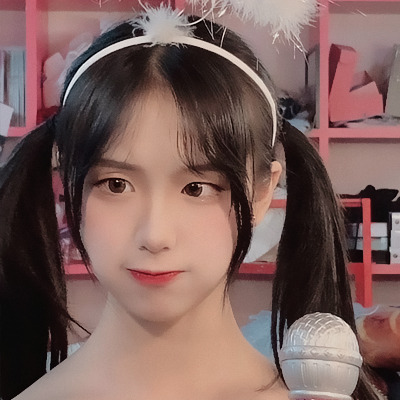

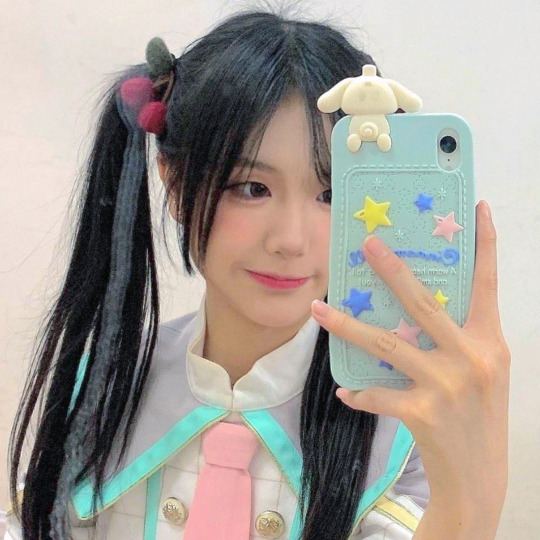


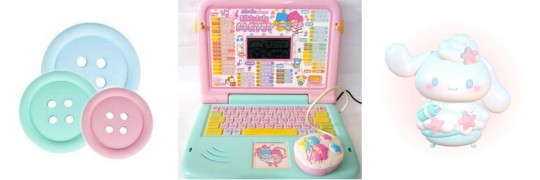
like o rb if you use/save (◕ᴗ◕✿)
#liang jiao#daxiaoqiao#daqiao#messy layouts#messy icons#messy packs#messy headers#girls planet 999#girls planet#gp999#liang jiao messy layouts#liang jiao layouts#liang jiao icons#daxiaoqiao layouts#daqiao layouts#daqiao icons#girls planet 999 layouts#girls planet 999 icons#girls planet 999 messy layouts#girls planet layouts#girls planet icons#gp999 layouts#gp999 icons#gp999 packs
185 notes
·
View notes
Text
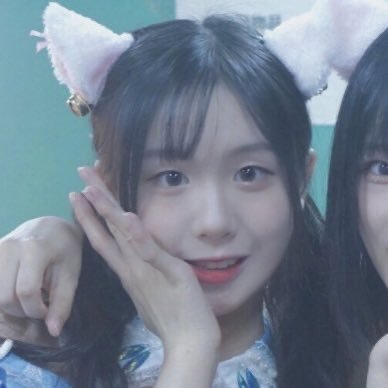

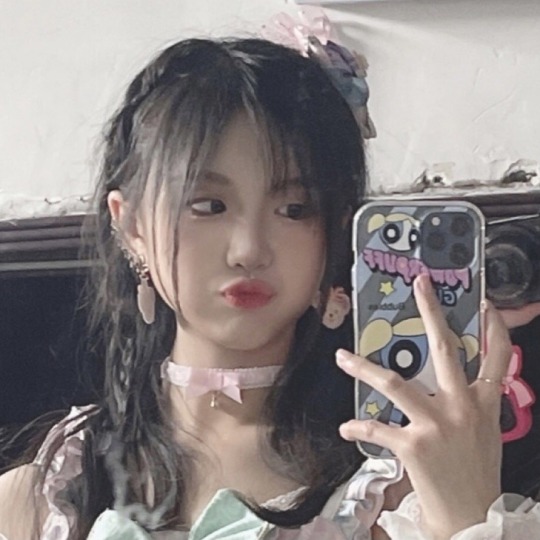
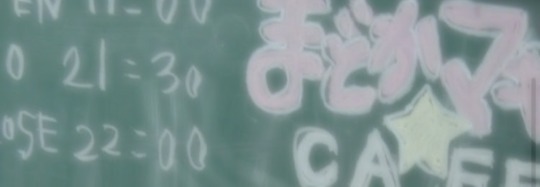



vote for powerful cutie liang jiao!!><
like or rb if save / use !!
#liang jiao#daqiao#girls planet 999#girls planet icons#liang jiao layouts#liang jiao icons#gp999#gp999 icons#gp999 layouts#lq ggs#liang qiao#xiao qiao#da qiao#messy moodboard#messy layouts#ulzzang
138 notes
·
View notes
Text
Dynasty Warriors Online Weapon Moveset Counterpart Digest
During the years that Dynasty Warriors Online was in service, many weapons have been made available for players to choose from. The game started off with weapons from Dynasty Warriors 5 before later adding in weapons from 7, 8 and even 9 along with Warriors Orochi 2 and Samurai Warriors 3. Original weapons exclusive to the game have also been made available as well.
The list begins after the break. Please notes that the names for some weapons, particularly in later games, may be different to the names in the game that the movesets were taken from.
Crescent Blade 偃月刀 - Guan Yu (DW5)
Great Axe 大斧 - Xu Huang (DW5)
Great Club 砕棒 - Xu Zhu (DW5)
Iron Rod 鉄鞭 - Huang Gai (DW5)
Scimitar 朴刀 - Xiahou Dun (DW5)
Pirate Sword 甲刀 - Gan Ning (DW5)
Battle Rod 砕棍 - Xiahou Yuan (DW5)
Twin Rods 双鞭 - Taishi Ci (DW5)
War Axe 戦斧 - Dian Wei (DW5)
Twin Picks 双戟 - Pang De (DW5)
Twin Sabers 双剣 - Lu Xun (DW5)
Twin Maces 双錘 - Diaochan (DW5)
Bronze Spear 直槍 - Zhao Yun (DW5)
Cudgel 長棍 - Original (DWO)
Twin Fans 桜扇 - Daqiao (DW5)
Strategist Fan 燕扇 - Sima Yi (DW5)
Vision Staff 幻杖 - Pang Tong (DW5)
Sorcerer's Staff 妖杖 - Zhang Jiao (DW5)
Iron Claw 鉄鈎 - Zhang He (DW5)
Nanman Gauntlets 蛮拳 - Meng Huo (DW5)
Iron Sword 鉄剣 - Zhou Yu (DW5)
Tyrant Sword 獄刀 - Dong Zhuo (DW5)
Battle Shield 戦盤 - Original (DWO)
Whip 多節鞭 - Original (DWO)
Curved Voulge 長双刀 - Wei Yan (DW5)
Pole Blade 鉤鎌刀 - Zhang Liao (DW5)
Noble Sword 宝剣 - Yuan Shao (DW5)
Iron Spear 鉄槍 - Ma Chao (DW5)
Wood Nunchaku 両節棍 - Ling Tong (DW5)
Chakram 夏圏 - Sun Shangxiang (DW5)
Bronze Pike 鉄矛 - Zhang Fei (DW5)
Iron Blade 斬馬刀 - Guan Ping (DW5)
Feather Fan 羽扇 - Zhuge Liang (DW5)
Boomerang 投弧刃 - Zhurong (DW5)
Wolf Sword 積刃剣 - Sun Quan (DW5)
Broad Sword 将剣 - Cao Cao (DW5)
Eastern Sword 弧刀 - Zhou Tai (DW5)
Tonfa 旋棍 - Sun Ce (DW5)
Buckler Blade 牙壁 - Cao Ren (DW5)
War Blade 盤刀 - Huang Zhong (DW5)
Dagger Axe 戦戈 - Yueying (DW5)
Flute 鉄笛 - Zhenji (DW5)
Twin Blades 双刃剣 - Cao Pi (DW5)
Apex Blade 尖剣 - Liu Bei (DW5)
Cursed Deck 呪符 - Zuo Ci (DW5)
Trident 三尖槍 - Jiang Wei (DW5)
Long Fork 叉突矛 - Xingcai (DW5)
Glaive 断戟 - Lu Meng (DW5)
Halberd 鉄戟 - Lu Bu (DW5)
Nodachi ���太刀 - Ranmaru Mori (SW3)
Horned Blade 麟角刀 - Original (DWO)
Jamadhar 穿刃 - Original (DWO)
Greatsword 巨剣 - Fu Xi (WO2)
Light Sword 細剣 - Nuwa (WO2)
Fang Sword 牙剣 - Sun Jian (DW5)
Double Fans 桃扇 - Xiaoqiao (DW5)
Fanged Club 狼牙棒 - Original (DWO)
Snake Sword 蛇剣 - Original (DWO)
Ogre's Fist 重手甲 - Original (DWO)
Dragon Barbs 龍牙鈎 - Original (DWO)
Marbles 堕落 - Da Ji (WO)
Throwing Knives 鏢 - Wang Yuanji (DW7)
Crimson Flute 紅蓮笛 - Zhenji (DW7)
Blue Dragon Sword 青龍刀 - Sima Zhao (DW7)
Lance 螺旋槍 - Deng Ai (DW7)
Thunder Spear 雷鳴槍 - Jiang Wei (DW7)
Wheels 火焔圏 - Sun Shangxiang (DW7)
Flying Swords 飛翔剣 - Zhong Hui (DW7)
Dragon Fan 龍扇 - Zhuge Liang (DW7)
Twin Axes 双鉞 - Zhang Liao (DW7)
Red Dragon Sword 紅龍刀 - Sun Quan (DW7)
Long Bow 長弓 - Huang Zhong (DW7)
Splendid Claws 飛麗爪 - Zhang He (DW7)
Heavy Axe 大鉞 - Xu Huang (DW7E)
Orb & Scepter 打球棍 - Guo Jia (DW7XL)
Twin Dragon Swords 双龍剣 - Liu Bei (DW7)
Striking Rods 打双鞭 - Taishi Ci (DW7)
Whirling Tonfa 旋撃棍 - Sun Ce (DW7)
Qilin Fang 麒麟刀 - Xiahou Dun (DW7XL)
Sword & Hook 撃剣 - Xu Shu (DW7E)
Chain Whip 月香鞭 - Diaochan (DW7)
Sky Piercer 方天戟 - Lu Bu (DW7)
Arm Blade 鉄舟 - Huang Gai (DW7E)
Pugil Sticks 双杖 - Daqiao (DW7E)
Iron Fan 鉄扇 - Xiaoqiao (DW7)
Waving Nunchaku 波闘棍 - Guan Suo (DW7)
Spinner 旋刃盤 - Bao Sanniang (DW7)
Rapier 刺剣 - Liu Shan (DW7)
Short Halberd 短戟 - Han Dang (DW8)
Long Blade 長刀 - Guan Yu (DW7XL)
Trishula 筆架叉 - Wang Yi (DW7XL)
Shaman Staff 錫杖 - Zhang Jiao (DW7)
Circle Blade 断月刃 - Ding Feng (DW7E)
Curved Blade 打刀 - Zhou Tai (DW7)
Lightning Sword 迅雷剣 - Sima Shi (DW7E)
Arm Cannon 連弩砲 - Guo Huai (DW8)
Pulverizing Club 潰棒 - Xu Zhu (DW8)
Dragon Spear 龍槍 - Zhao Yun (DW7XL)
Hand Axe 手斧 - Dian Wei (DW8)
Talisman Cards 導符 - Zuo Ci (DW8)
Flying Boomerang 飛刀 - Zhurong (DW8)
Great Iron Blade 大剣 - Guan Ping (DW8)
Dual Blade 双斬剣 - Cao Pi (DW8)
Crossed Pike 十字戟 - Lu Lingqi (DW8XL)
Double Trident 両刃槍 - Jiang Wei (DW8)
Bladebow 刃弩 - Yueying (DW8E)
Dagger 匕首 - Original (DWO)
Bow & Rod 鞭箭弓 - Xiahou Yuan (DW8)
Dual Hookblades 双鉤 - Yue Jin (DW8)
Twin Pistols 双短銃 - Original (DWO)
Battle Ge 闘戈 - Yueying (DW8)
Great Sickle 大鍘刀 - Zhou Cang (DW9)
Broad Axe 長鉞 - Xin Xianying (DW9)
Extension Blade 伸細剣 - Yuan Shao (DW9)
Nine Rings Blade 九環刀 - Sun Jian (DW9)
Winged Fan 翼扇 - Sima Yi (DW9)
Master Voulge 眉尖刀 - Wei Yan (DW9)
Battle Staff 闘棍 - Zhou Yu (DW9)
Piercing Spear 貫薙槍 - Ma Chao (DW9)
Swallow Swords 飛燕剣 - Lu Xun (DW9)
War Trident 三尖刀 - Yu Jin (DW9)
Ballistic Spear 射刃槍 - Man Chong (DW9)
Rake 九歯鈀 - Lu Su (DW9)
Sword & Shield 盾牌剣 - Xingcai (DW9)
Framed Halberd 画戟 - Lu Bu (DW9)
Mandarin Duck Hooks 鴛鴦鉞 - Lianshi (DW9)
Jeweled Pike 宝戟 - Lu Meng (DW9)
Striking Sword 烈撃刀 - Sima Zhao (DW9)
Falcon Axes 隼双鉞 - Ma Dai (DW9)
Emei Piercers 峨嵋刺 - Wang Yi (DW9)
Shadow Fan 翳扇 - Pang Tong (DW9)
Battle Gloves 眷手甲 - Meng Huo (DW9)
Flaming Sword 焔刃剣 - Sun Quan (DW9)
Chaos Rods 壊双鞭 - Taishi Ci (DW9)
Sky Splitter 裂空刀 - Guan Ping (DW9)
Crescent Edge 月牙鏟 - Li Dian (DW9)
Studded Club 裂棒 - Xu Zhu (DW9)
2 notes
·
View notes
Text






💌+🤟🏻 Zz (>。☆)
20 notes
·
View notes
Photo


Kinda baffling that Sun Ce and Da Qiao are thinking Ling Tong is sus.
Ling Tong when you encounter Sun Ce and Da Qiao as him during “Find the Beauties” in Dynasty Warriors 8: Xtreme Legends.
#da qiao#daqiao#sun ce#ling tong#wu kingdom#dynasty warriors#dynasty warriors 8#shin sangoku musou 7#shin sangoku musou#koei tecmo#sus
9 notes
·
View notes
